Installations, Objects

|
Roll-TV
Multiple, 1977, 6 cm x 8,6 cm x 2,5 cm Plastic TV-set from a toy store, with xeroxed storyboard drawings for ad libitum scrolling |
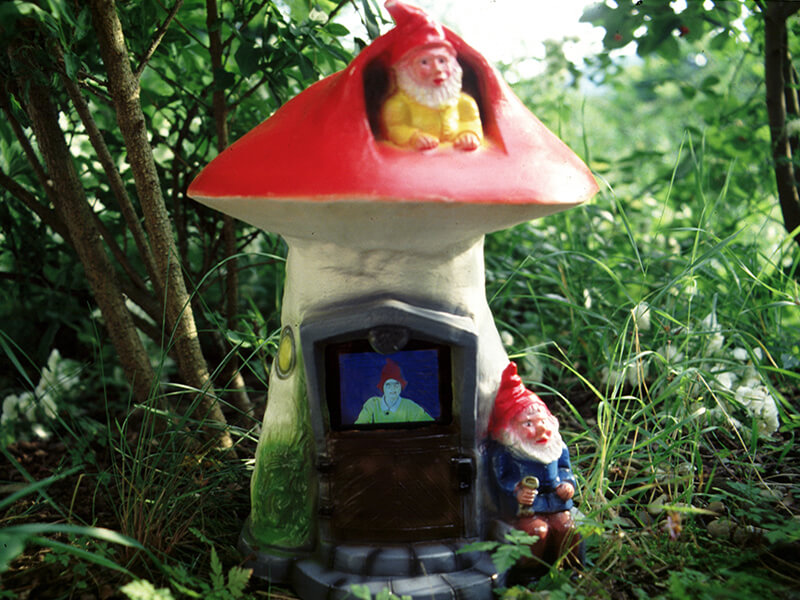
|
Dwarfs and Giants
video sculpture, 1993, ready-made painted plastic object, monitor, height 36 cm A monitor fits into the door of a mushroom-shaped dwarf home found at a gardening center. The video shows a dwarf reading passages from German philosopher Arthur Schopenhauer’s book »Metaphysics of Beauty« (1820), focussing on: the function of art work, the relation between science and art, beauty in art and nature, light and its aesthetic effect. |
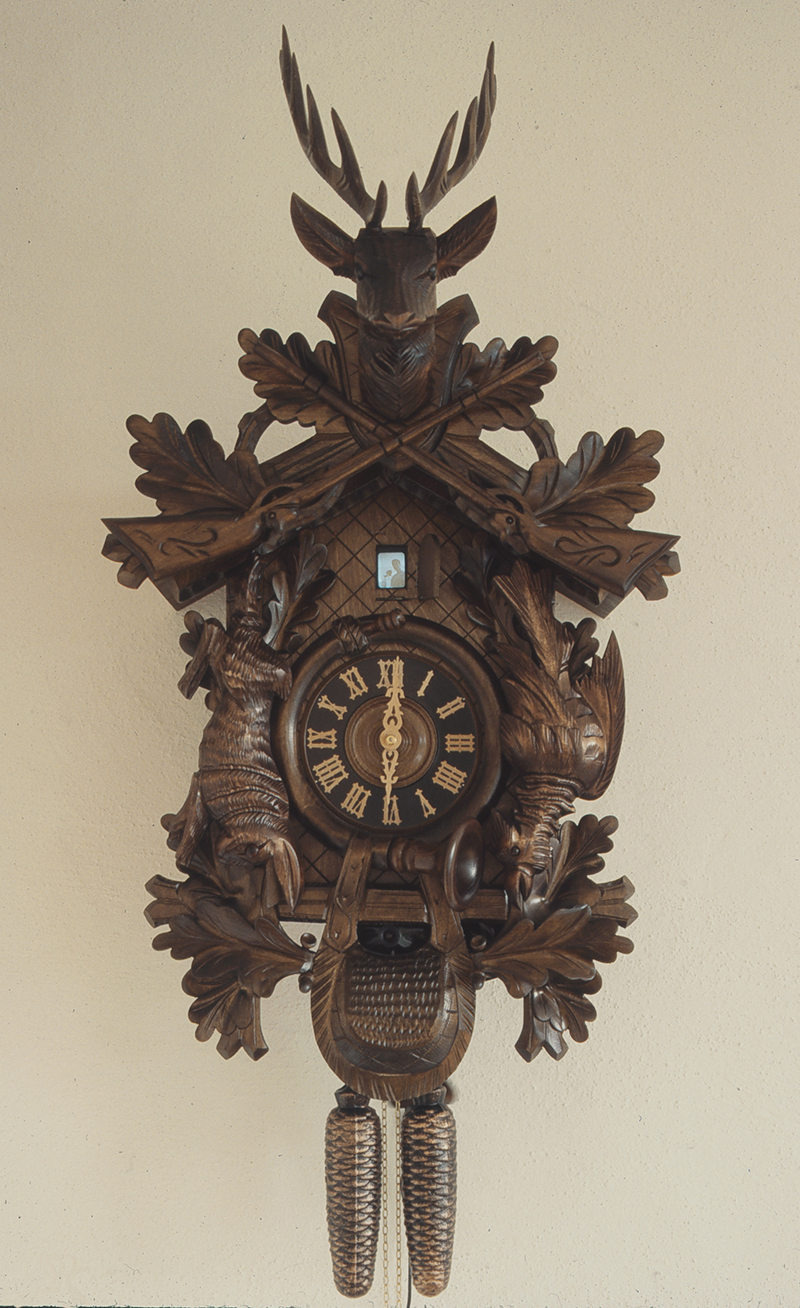
|
Video Coocoo Clock
video sculpture, 1993, coocoo clock with CCTV Every 30 minutes the coocoo calls when the little door opens. Yet what you see is not the bird but the image of yourself, standing in front of the clock. |

|
Ark of the Covenant
video sculpture, 1993, wood, foam board, metal, monitor, 22 x 15 x 22 cm The Old Testament reports how God communicated with His people by means of the Ark of the Covenant. A good reception was ensured by regular testing. The video »Trinity Test Tape«, dating from 1975 (8 min, colour, sound) fits in this mobile shrine. |

|
Melancholic Architecture
video sculpture, 1993, burnt clay with white paint, monitor, height 25 cm This piece refers to Albrecht Dürer’s engraving »Melencolia I« (1514). In medieval times, the »Magic Square« (as depicted on the wall in the background of the engraving) was a helpful tool for rapid calculations of architectural measures and proportions in harmony with the cosmological concepts of the time. The sculpture consists of of a kiosk-type architectural model and three geometrical objects taken from Dürer’s engraving. In a square-shaped window a video shows a continuous animation of graphic configurations. The numbers that the animated green line is connecting always sum up to 34, symbolizing the unification of the human (4) and the divine spheres (3). |

|
The Royal Children
video sculpture, 1993, burnt clay, camera, monitor; height (with antenna) 59 cm A miniature surveillance camera in the tower transmits the image of the visitor in the size of a passport Image onto a video screen located in the tower’s only window. Viewer and video image belong together but are separated like the legendary royal children by an almost unsurmountable obstacle. In order to reach the object of desire you must be able to dream... |
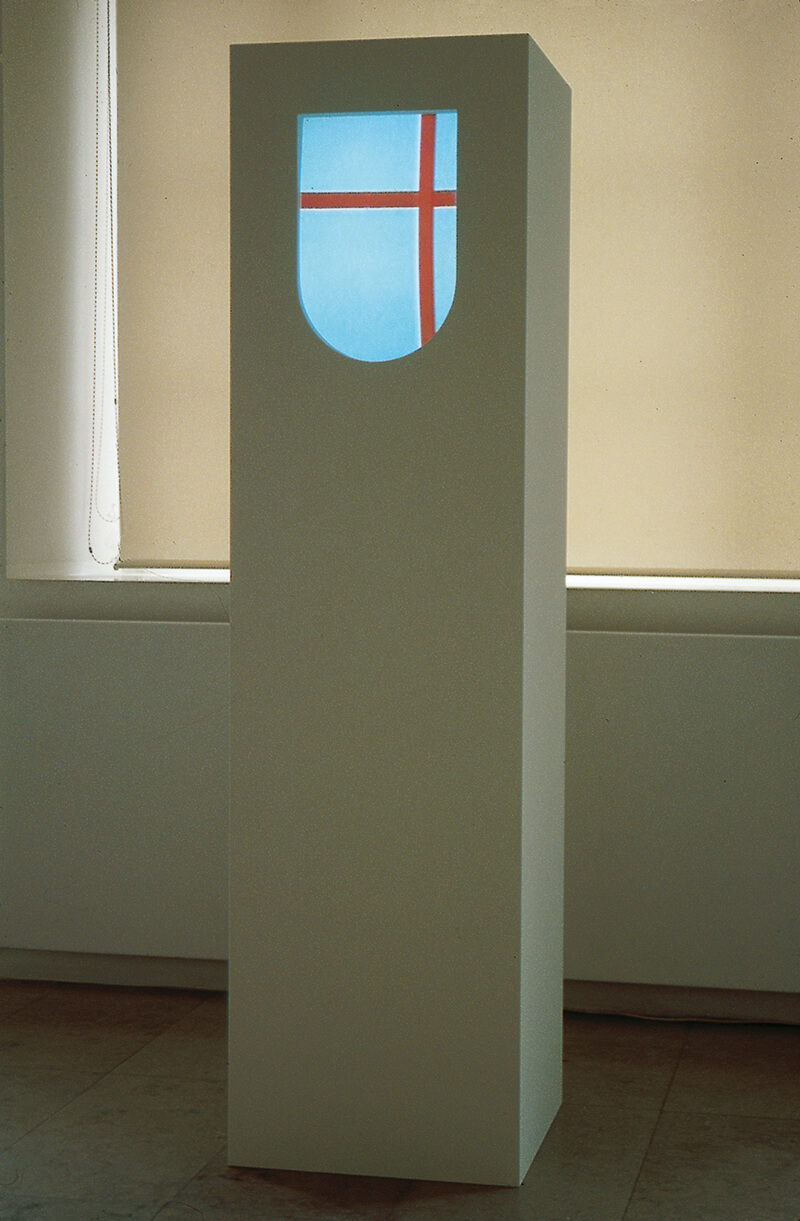
|
The Freiburg Coat of Arms
computer-generated video sculpture, 1995, white wooden box with monitor, height 210 cm; Housed in a white wooden box, a video screen shows the heraldic sign of the city of Freiburg, a red cross on white ground. The intersection point of the cross is in constant movement across the screen. Whenever it touches the edge, it gets bounced back into the heraldic field accompanied by an acoustic signal. |
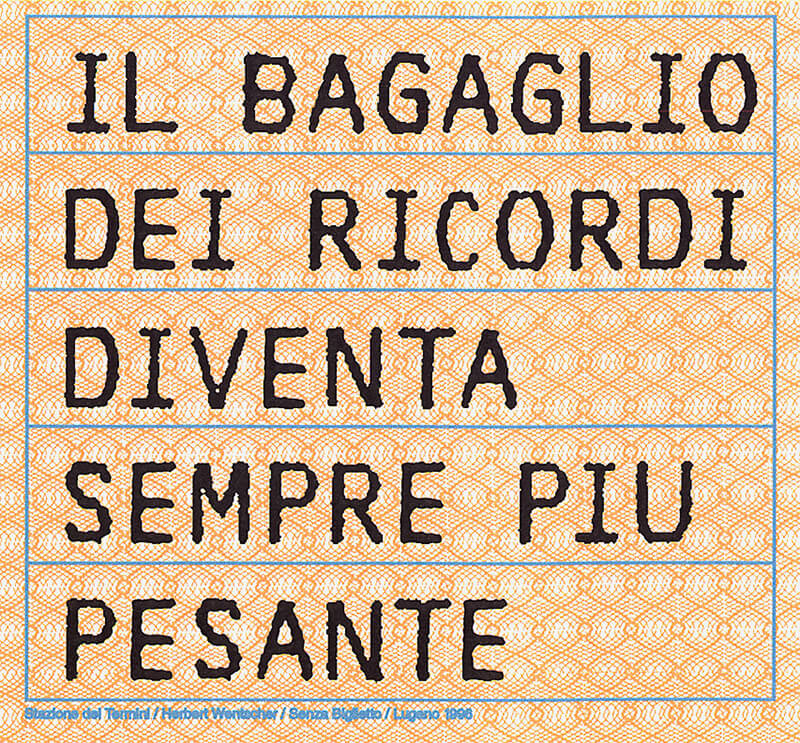
|
Cartelli per carelli
intervention at Lugano Railroad Station for the exhibition Senza Biglietto, June – August 1996 Instead of the usual advertisement bills twelve posters with short messages were displayed on the 40 baggage carts of the station. The screen prints ( 47 cm x 50 cm) mimick the design of the Swiss railroad ticket.
|
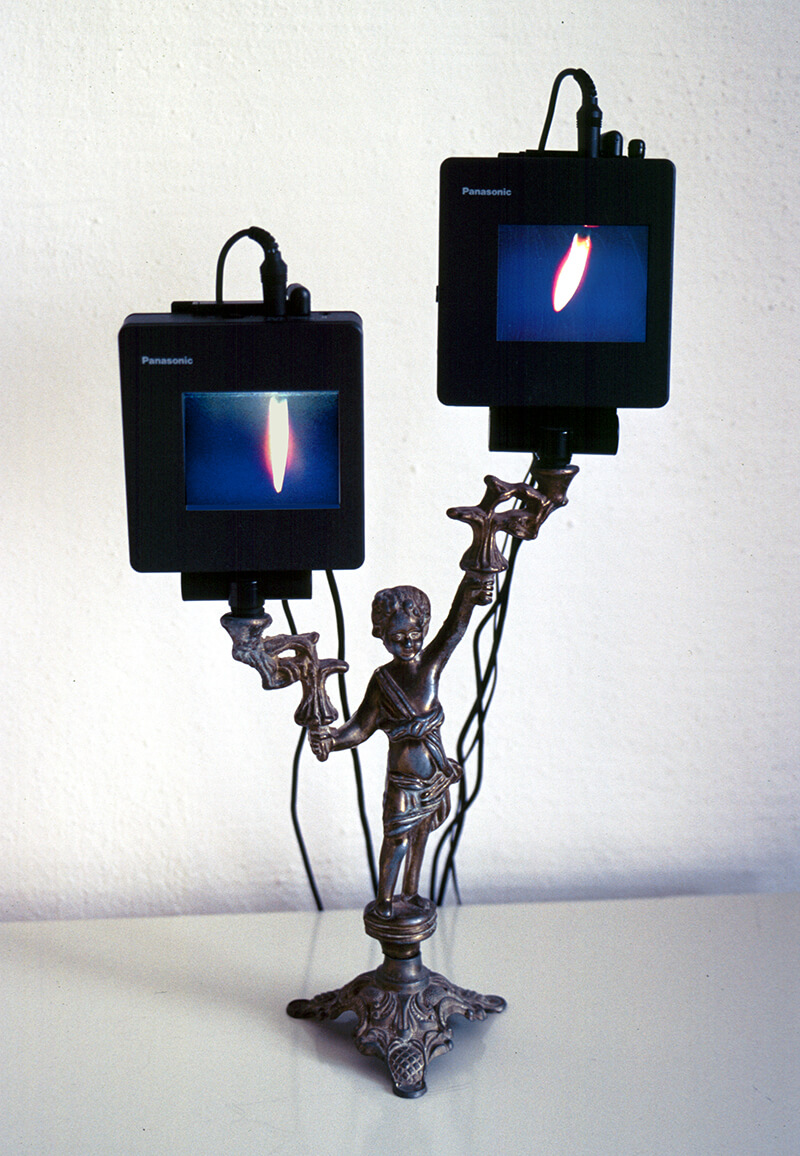
|
Video candelabrum
video sculpture, 1996, metal, 2 monitors, height 41 cm A metal putto figure is holding two small screens. On each screen candle flames are flickering upside down from where the video cable goes into the monitor. Faintly, piano music by Chopin (Nocturne) can be heard, played by an amateur. |
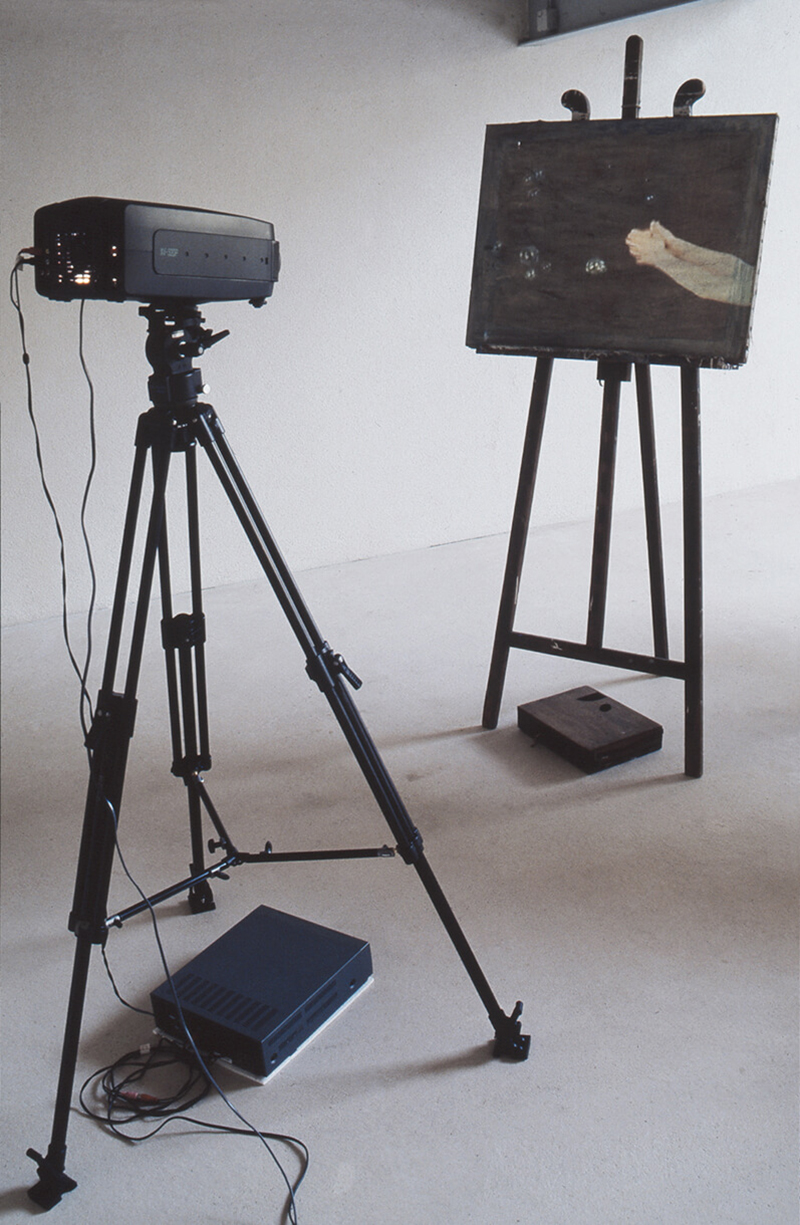
|
Swat!
video installation, 1996, easel with canvas on wooden frame, tripod with video projector, paint box, video player Two tripods face each other: one looks modern, the other antique. The beamer on a metal tripod projects soap bubbles onto an old empty canvas on a wooden easel. As the bubbles drift over the canvas, a child is trying to catch them, clapping his hands. |
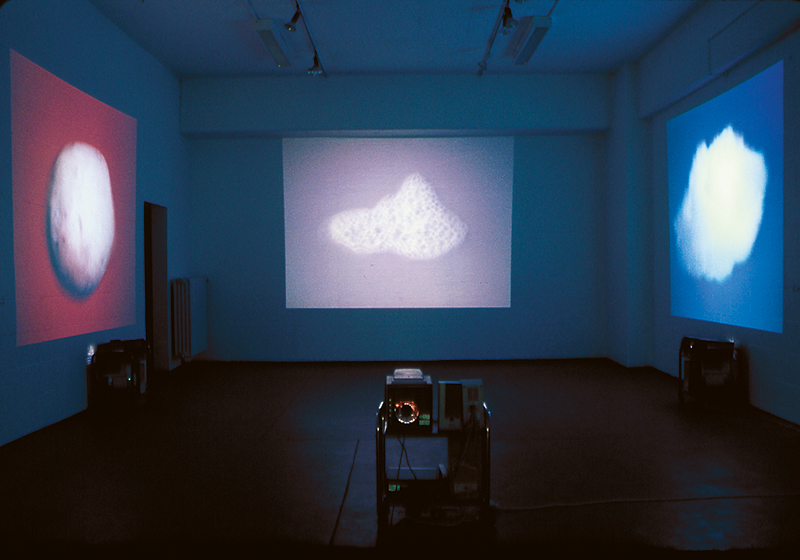
|
Elemental Triptych
video installation, 1998 Three projections with the image of a cloud, a potato and sea foam shapes that occur as waves wash over the beach. By use of a morphing software, the cloud and the potato slowly change shape and surface whilst the foam patches do not need technical support for changing. We hear a sound mix of rolling waves, wind and bird noise, and humming. A study on nature and manipulation. |
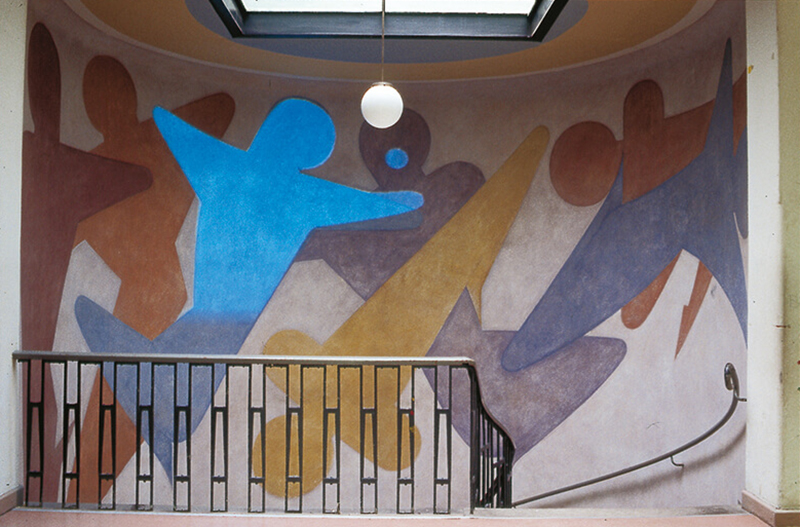
|
Dance the Schlemmer
video installation at Bauhaus-Universität Weimar, 1999, on the occasion of the 80th Bauhaus Anniversary One of the figures in Oskar Schlemmer’s wall painting was digitally remodelled to fit the historic fresco in a projection overlay. Almost 70 years after its creation by the Bauhaus artist, the figure slowly began to move. |

|
SALVE/SLAVE
video installation, 1998 A monitor shows the video song »SALVE/Goethe-Rap« (3 min). Near the screen rests the historic plaster cast of Goethe's hand, holding a remote control. A tribute to Weimar’s poetry giant. |
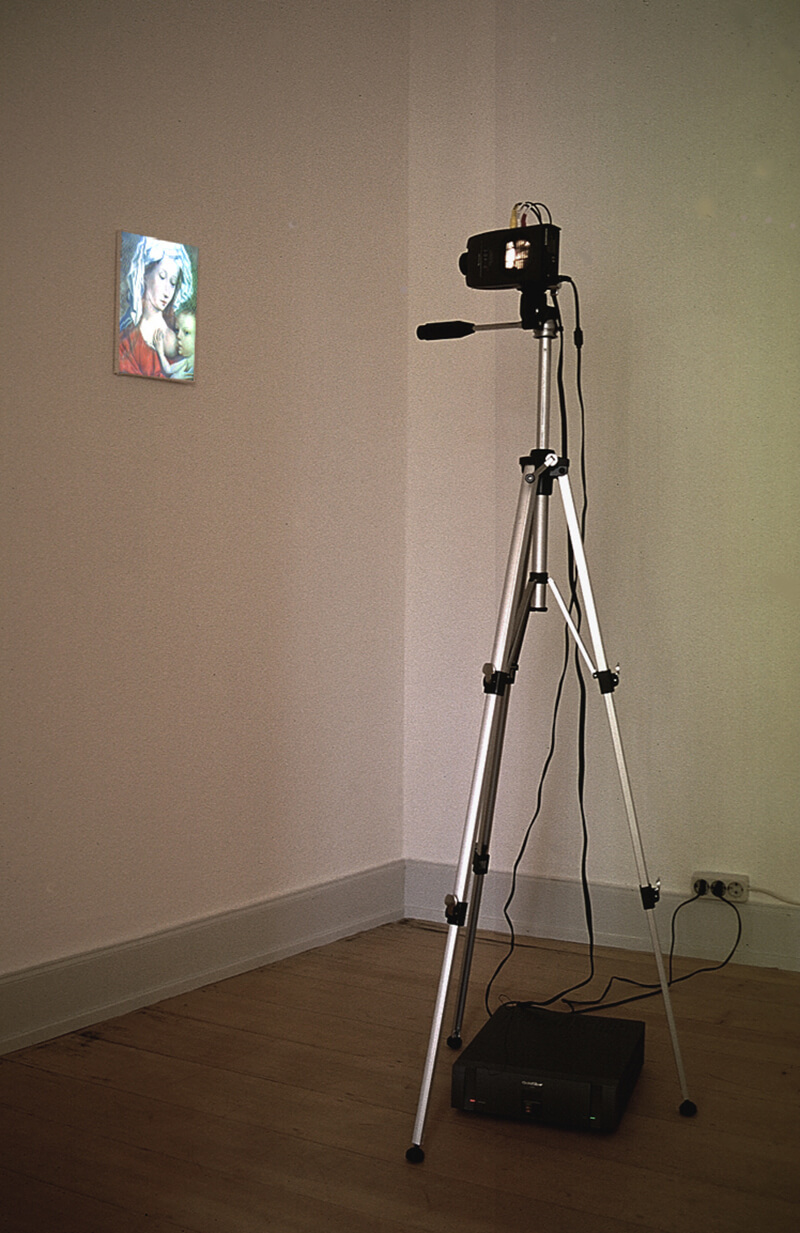
|
Saint Luke painting the Madonna
video installation, 1999, video projector on a tripod, white canvas on stretcher This work is based on the legend of Saint Luke: He fell asleep while he was painting Saint Mary. On waking up, he found the painting finished. Some questions arise from the story: How had St. Luke planned to paint St. Mary? Why did he fall asleep? How was the image completed and by whom? Are painters still asleep today? Is art history a constant morphing process? A video projector on a tripod projects images onto an empty canvas on the wall: old paintings showing Mother Mary breast-feeding her child slowly change while a gentle snore and baby noise can be heard. |
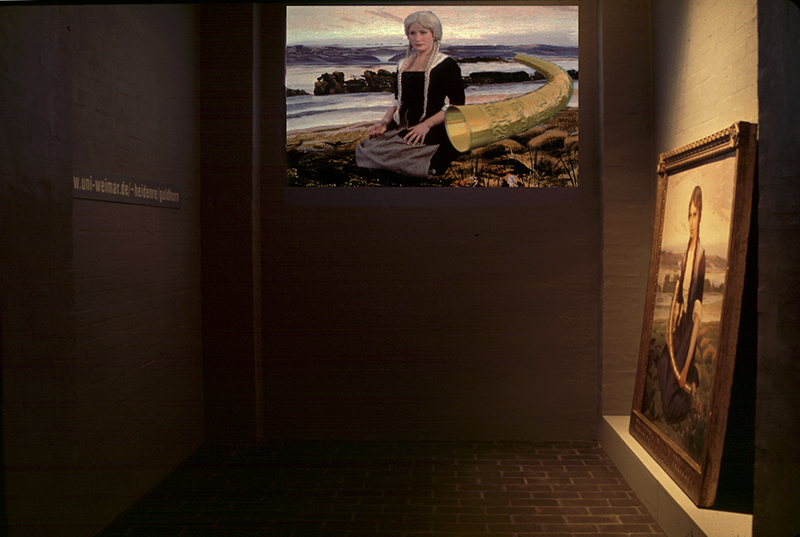
|
Goldhorn
video installation and internet site, Sønderjyllands Kunstmuseum, Tønder / Denmark 1999 The installation refers to the riddles that mark the history of the two golden horns found near Tønder / Denmark in the 17th and 18th centuries. Dated vaguely in the first millenium A.D., the pagan objects are an important part of the Danish national heritage. In 1802, the goldsmith Niels Heidenreich managed to steal the horns from the royal treasure chamber in Copenhagen. He melted them, and only reconstructed copies are left today. Scientists, writers and artists have felt inspired ever since to shed some light on the origin, signification and history of the golden horns. |

|
Lunarium
light installation, Museum für Neue Kunst, Freiburg and Kunsthalle Erfurt, 2001; Liquidrom Berlin 2003 – 2004 The Lunarium simulates the effect of the moon. A scientific approach (correct reproduction of moon light temperature and luminance) was complemented with non-scientific measures (energetic feng-shui, stones under the bench charged with lunar energy). A text board at the entrance invited the public to lie down on the bench in a darkened room, dimly lit by the Lunarium: |

|
Colour Management
video installation, 2001 The portrait of the artist appears in different ethnic looks. A video loop shows the continuous transformation from a caucasian type to an asian, a black african, and back again. CAFE (Computer Aided Face Engineering) changes facial features towards a different visual appearance, based on average calculations of image banks. |

|
Kick
video sculpture, 2001 Behind the grip hole of an office document file is a small video screen. It shows the artist trying to kick a ball into the hole. |
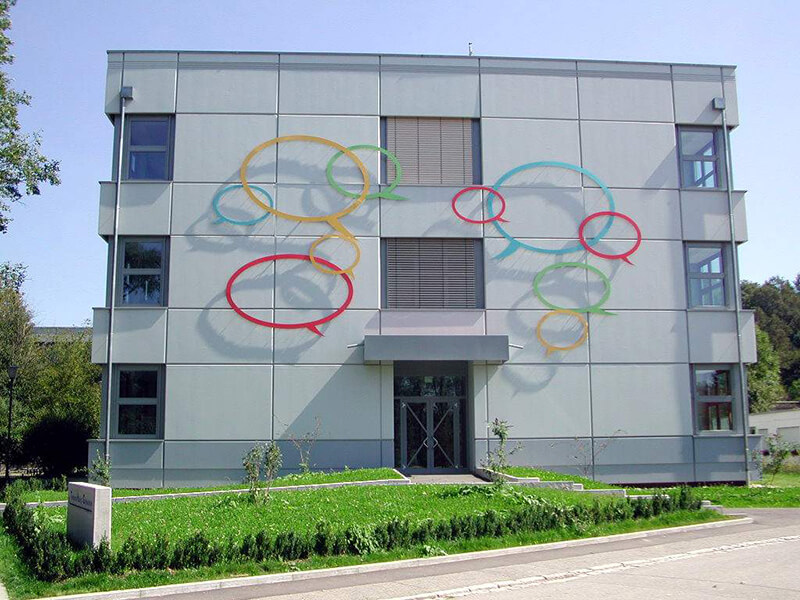
|
Speech Bubbles
light sculpture with digitally controlled LEDs, Theodor-Heuss-Gymnasium, Schopfheim / Baden, 2005 Ten speech bubbles made of steel and painted in strong colours are hanging in front of the school building’s orthogonal facade. At night, the LED light behind the bubble shapes reflects from the wall. Speed and rhythm of the dimming process can be programmed individually by the school’s pupils. |

|
e-Forest
model for a floor installation, 2007, wood, polyester resin, LED lights; wooden base 18 cm x 32 cm x 2 cm, height of tree object 15,5 cm Stereotyped pine tree shapes made of translucent polyester resin have an LED element underneath. Several hundert of these trees form a glowing forest on the floor of a dark room. Connecting the LEDs with a computer program makes every tree a pixel of an electric forest that can display patterns, virtual movements and other visual messages. The prototype model has 9 trees, changing colours randomly. |
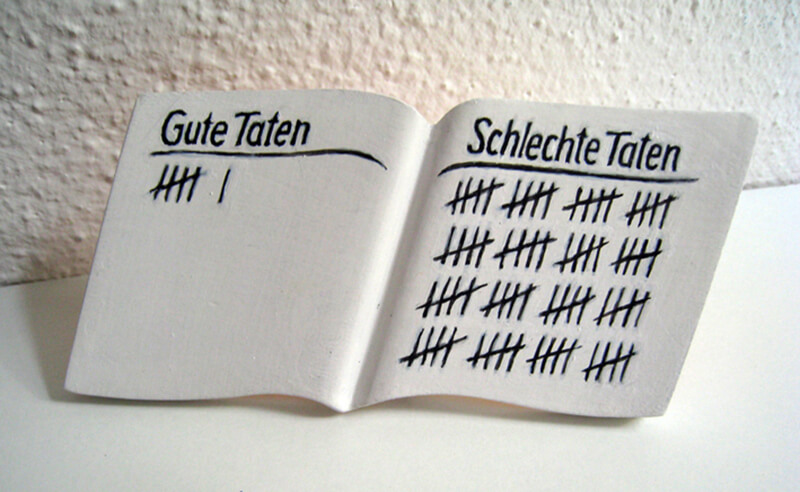
|
Little Near-Death-Experience
painted wooden object, 2008, 13,5 cm x 6 cm Accounting good deeds versus bad deeds. |
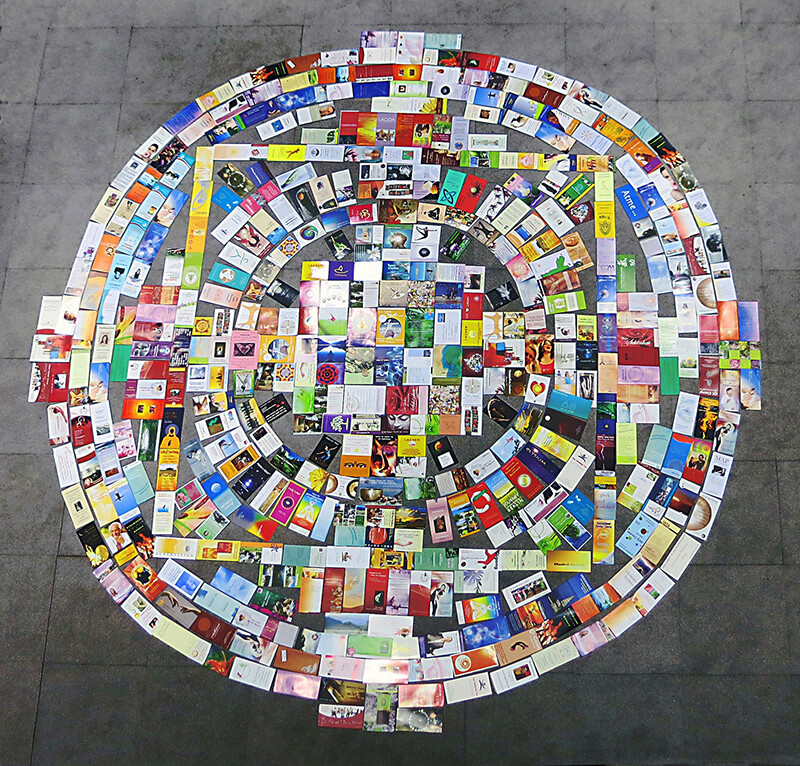
|
Fortune Wheel
floor installation, 2012, diameter 5 m The material for this installation consists of printed flyers that can be found in health food stores and cafés – advertisement material for seminars, lectures and therapies promising happiness and healing, such as yoga, meditation and the exploration of the self. |